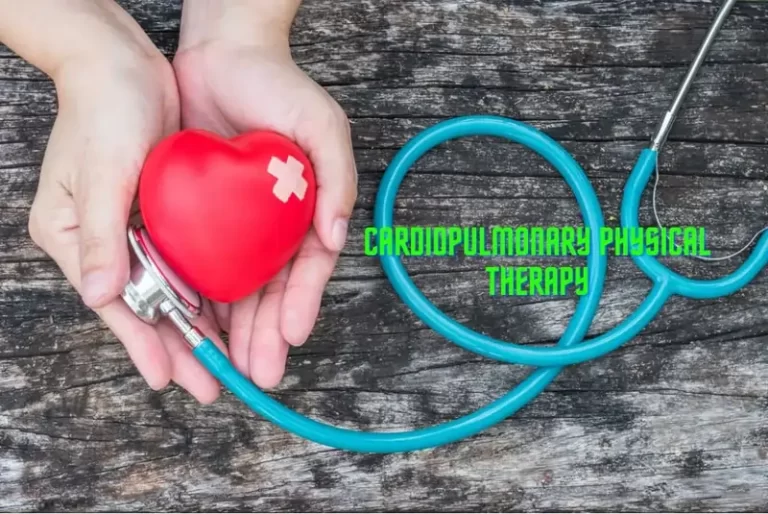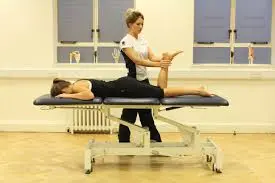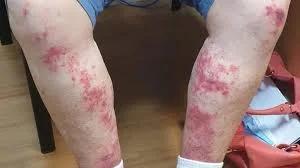Home Physical Therapy
Introduction
Physical therapy is among the home-based healthcare services that have become more and more popular in recent years. There are several benefits to home physical therapy for people recuperating from surgery, injuries, or chronic illnesses.
This article examines the advantages of at-home physical therapy and the reasons it’s growing in popularity among both patients and medical professionals. There are several reasons why your mobility may deteriorate, ranging from prolonged hospital stays and injuries to diseases and long-term ailments.
When a medical condition prevents you from leaving your house, our physical therapists give hands-on treatment to help you get back in action. The convenience that home physical treatment provides for patients is one of its main benefits.
Patients can get therapy in the convenience of their own homes rather than needing to make appointments at a clinic or hospital. Patients may now book appointments at times that work best for them, cut down on travel time, and do away with the need to make transportation arrangements.
Furthermore, having treatment at home can make patients feel more at ease and calm, which will aid in their general recuperation.
The well-being of our patients is our top priority at Results Physiotherapy, which is why we’ve developed an in-home concierge service that lets you get the care you require in the convenience of your own home.
Our team’s top focus is safety, but we’re also dedicated to helping you return to your favorite activities and pain-free life. We now provide at-home physical therapy in addition to in-person visits to our state-of-the-art facilities.
Without requiring them to get in their cars, we treat patients in their homes in the same manner as we would at our clinic. Our staff at Results uses individualized fitness regimens, body knowledge, and hands-on physical therapy to help patients feel better.
We can answer your questions if you’re wondering what in-home physical therapy is and how it differs from our telemedicine physical therapy or our regular in-person physical therapy.
One of the best things about outpatient physical therapy is that it can be offered in a wide range of settings, including multiple virtual and remote technology platforms.
Patients may now obtain physical therapy treatments no matter where they are thanks to recent improvements and specialized offerings.
Another direct method that our physical therapists at Results PT can assist patients in managing their pain, enhancing their function, and expanding their range of motion inside the comforts of their own homes is through in-home physical therapy.
Physical therapy was mostly performed in clinics or hospitals, and patients had to arrange their own transportation to and from these facilities.
Patients may now have their physical therapist come to them directly since virtual physical therapy and in-home physical therapy services eliminate the need for patients to plan how they will get to their scheduled appointments.
For patients who are unable to leave their homes because of recent surgery, discomfort, or other modifications that need to be made, in-home physical therapy is a terrific option.
More alternatives are always preferable when it comes to physical therapy care, which is why Results PT has prioritized helping patients in a number of ways, including at home, digitally, and in person at one of our hundreds of clinics nationwide.
Physical Therapy That Targets Your Needs
Freedom comes from movement and muscular power. For some, this means starting their active lives again following surgery or going back to work. For others, it entails going about their houses securely.
Our physical therapists strive to assist you in reaching your objectives. Our physical therapy employs focused, specialized procedures and programs, such as:
Complete joint therapy: Our therapists employ the most recent technologies and mobilization methods if you receive a new hip, knee, or shoulder. They assist you in being well enough to attend outpatient therapy.
Program for chronic diseases: Individualized treatment plans and exercise recommendations are made by our specialty-trained physical therapists for patients with heart failure and chronic obstructive pulmonary disease (COPD).
Vestibular training: Our skilled vestibular therapists can assist if you experience vertigo or have inner ear issues. They are skilled in enhancing your mobility and balance.
Program for Parkinson’s disease: We provide therapists certified by the LSVT Big®
program, which targets the physical obstacles associated with Parkinson’s disease, if you have the illness. The treatment facilitates self-care, walking, and other activities.
Relief from lymphedema: Our licensed lymphedema therapists treat edema and impaired circulation with massage, manual drainage, and exercise.
Who Does Home Health Physical Therapy Help?
Those of all ages, from young toddlers to elderly folks, benefit from physical therapy by having better movement and stability. Rather than having to travel for outpatient treatment, receiving therapy in your home allows you to stay safely where you live. You must fulfill the standards for home health care in order to be eligible for in-home physical therapy.
With physical therapy, many conditions, illnesses, and injuries may become better. We treat patients for a range of reasons as the biggest provider of home health care in Wisconsin, including.
- Joint Replacement
- Congestive heart failure (CHF)
- COPD
- Diabetes Cancer
- Parkinson’s Disease
- edema lymphatic
- Several tumbles
- Prolonged hospital stays or bed rest
Benefits of In-Home Physical Therapy
Our therapists will exercise, stretch, massage, and apply heat treatment to treat you. Our program can help you not only exercise more but also in other ways, such as.
Post-surgical care In-home physical therapy serves as a bridge to any necessary outpatient rehabilitation after joint surgery. Your therapist administers your medicine, examines your wounds, and assesses your house.
If one or more of the following situations describes you, you may be a candidate for in-home joint therapy:
- Not able to go alone to outpatient therapy
- possess two or more long-term illnesses
- Consume many prescription drugs.
- lack of foster parents or a network of support
- experienced health issues when undergoing surgery
Energy conservation: Our therapists educate you on how to preserve energy while yet enhancing mobility if you have a chronic illness like COPD or heart failure.
Enhanced circulation: Our therapists strive to enhance blood flow if you suffer from heart failure. They facilitate lymph movement, which is a fluid that supports the immune system, following cancer therapy.
Reduced danger of falling: Therapists assess your medicine, hearing, vision, balance, and urgency to use the restroom. Following your evaluation, the therapist could recommend minor adjustments to your environment to reduce the risk of falls.
Getting Started With Physical Therapy at Home
If your physician recommends physical treatment at home, you should anticipate:
First assessment: A licensed professional assesses your health, goes over your prescription history, and searches your house for any fall hazards. The therapist clarifies the therapy timetable and responds to any questions you may have.
Expert providers: You receive treatment and progress monitoring from a licensed physical therapist or physical therapist assistant during your appointments.
Patient education: You will learn particular motions and exercises from your therapist that you may perform in between sessions. You also pick up skills to identify potential falls in your house.
What Are The Benefits of At-home PT?
Physical treatment provided at home has several benefits.
- Travel time is reduced.
- You may work out in the convenience of your own home.
- This is helpful because if you’re having problems with certain obstacles, like stairs, I can understand exactly why your stairs are difficult to navigate,” he said. It enables your physical therapist to assess the safety of your house.
One of the best things about at-home physical therapy is that we get to see you in your home, where most of your time is spent.
It was beneficial that to understand exactly why your stairs are tough to navigate if you’re experiencing problems with particular barriers, like stairs. In the end, this enables to design a particular regimen around the mobility challenges you have at home.
A brief 2016 research suggests that physical treatment administered at home might be just as successful as therapy received in a clinicTrusted Source.
The study found no difference in the overall functional recovery following knee surgery between patients who received in-office or at-home treatment. The research did point out that in-office functional gains happened sooner.
Who Qualifies For At-Home Physical Therapy?
Although many people can benefit from at-home physical therapy, it is usually only available to those who are housebound.
In addition, you can be eligible in the following situations:
- It is advised that you stay at home because of your health.
- Without help from a person or equipment, leaving your house requires a significant amount of work.
- It takes a lot of work to leave your house.
However, it’s always recommended to speak with a healthcare provider because the suitability of at-home physical therapy varies depending on the specific circumstances and type of therapy required.
Types of In-Home Physical Therapy Exercise
The workouts are designed to recover a certain condition. Certain leg strengthening exercises include bending the right knee, elevating the left leg toward the ceiling, and performing straight leg lifts while resting on one’s back.
The Bridge and the clamshell are two further leg-strengthening exercises. Enhancing mobility can also be achieved through stretching exercises.
Among them is Stretching the hamstrings involves having the patient lie on their back, lifting their left leg, putting their hands around their left thigh, and pulling their knee toward their chest. After that, they would straighten their knee until they felt a strain at the back of their thigh.
Stretching exercises such as the Piriformis stretch include the patient lying on their back with their knees bent and their feet flat on the ground.
The right ankle is crossed over the left knee, hands are clasped around the left thigh, and the knee is pulled toward the chest. The right hips, thigh, and buttocks should all feel stretched. One focused treatment approach that can address the body as a whole is physical therapy.
Exercise is also helpful for general health problems, such as some illnesses and aging-related conditions. Physical activity for the body can also aid in lowering blood pressure and blood sugar levels, which can speed up the healing process after injuries.
Physical therapists employ exercise as their main tool to help patients move and feel better. In cases when an accident, disease, or surgery limits normal bodily function, movement, or flexibility, the doctor will suggest seeing a physical therapist.
Why At-Home Physical Therapy Exercises Are Important
The key to successful injury rehabilitation is including frequent physical therapy exercises; these exercises provide the stimulation needed to promote healing and enhance functional mobility. Physical therapy exercises performed at home have become essential.
Particularly in light of the increasing demand for adaptable and flexible rehabilitation techniques. Individualized home routines allow patients to continue their therapy in a practical way, guaranteeing steady improvement even in the face of complex schedules and life events.
Understanding the Benefits of At-Home Physical Therapy
Physical treatment provided at home unquestionably gives you control over your recovery process. It improves overall quality of life by providing relief from chronic pain and greatly enhancing independence.
- increases your sense of independence by giving you the skills and information to take care of your own illness or injury.
- makes it easier for you to carry out regular, focused activities at your own speed, which helps to reduce chronic pain.
- Increases convenience because you may perform these exercises at any time without having to worry about getting to and from the therapy center.
- Because an at-home program is flexible, it encourages constancy in habit, which produces greater outcomes.
- reduces the financial burden of therapy sessions by acting as an affordable option for continuous care.
- Physical treatment provided at home helps you become more aware of your body and its boundaries.
Convenience And Cost-Effectiveness
In addition to providing a familiar environment, at-home physical therapy sessions are an affordable option that does away with the need for frequent travel and lower out-of-pocket medical costs.
- Reducing travel time and costs for routine clinic appointments
- decreasing out-of-pocket expenses by doing away with co-pays
- lowering the requirement for pricey after-treatment drugs
- preventing the need for help or hiring caregivers to help with transportation
- Potential insurance coverage for in-home physical therapy
Maintaining Continuity of Care
Physical therapy provided at home is essential to preserving continuity of care, especially when dealing with interruptions brought on by travel or other problems. Making use of home-based rehabilitation guarantees continuous and regular therapy for you.
- Sufficient control over pain and discomfort
- following a continuing treatment regimen
- preventing more injuries
- Constant improvement in mobility
- Keeping your therapy schedule full
Getting Started With At-Home Physical Therapy
There is more to taking the initial steps toward home-based rehabilitation than merely having the best of intentions. It just requires communicating with a qualified physical therapist, creating a customized workout program, and purchasing the necessary tools. laying the groundwork for a strong at-home therapy journey.
Your in-home therapy plan will be implemented gradually and with a focus on reaching your goals. Set quantifiable, realistic goals for yourself and pay attention to your body’s cues at all times. Achieving optimal recuperation requires synchronizing with your body’s cycles; it’s not a sprint but a marathon.
Consulting With A Physical Therapist
It is essential that you start your recovery process with a physical therapist’s advice. Their knowledgeable direction sheds light on your trip and shows you the best path to a quick and safe recovery.
- Knowledge about your particular ailment and its effects
- determining the workouts that are best for your situation
- Customizing a rehabilitation program to meet your demands and way of life
- educating people on proper workout form to avoid further injuries
Creating a Personalized Exercise Plan
A customized workout regimen is essential to clearing your route to recovery. Basically, it’s like building a personalized blueprint that matches your recovery objectives and degree of fitness with the scientific knowledge of your ailment.
- Collaborate intimately with your physical therapist
- Analyze your present level of ability and physical state.
- Determine your goals for healing.
- Take into account the particulars of your injury.
- Give examples of exercises that emphasize flexibility, balance, and strength.
- Establish a schedule that mixes exercise and rest.
- Establishing deadlines for incremental improvement
Basic At-Home Physical Therapy Exercises
Understanding the fundamentals is the first step in starting your at-home physical therapy adventure. To strike a virgin note, your primary focus will be on fundamental exercises designed to enhance your balance, stretch, and strengthen your muscles.
Instead of crumbling as the trial becomes tough, resilience grows when it does. Engaging in basic yet effective activities such as leg lifts, ankle pumps, and single-leg stands at home can reduce pain while increasing your range of motion and general strength.
Stretching for Pain Relief
Stretching exercises are a crucial step toward achieving pain treatment at home. They may significantly reduce discomfort. Regular practice leads to observable alleviation and facilitates a more straightforward healing process.
The ability to be flexible is a powerful tool for pain management at home. In addition to improving flexibility, stretching promotes normal blood flow, which strengthens your body’s natural pain-reduction system.
Strengthening Muscles for Improved Mobility
Targeted exercise routines help strengthen weak muscles and lay the groundwork for increased mobility. Including these strength-training exercises in your at-home rehabilitation regimen will help you get well faster.
Exercises that strengthen muscles are crucial for at-home recuperation. Creating a strengthening program that works will undoubtedly accelerate the healing process and aid in the restoration of your mobility.
Increased muscular power can help with rehabilitation by providing more control over previously difficult motions. Including these activities in your at-home rehabilitation program will significantly improve your capacity to function again.
Exercises for strengthening muscles at home are beneficial for more than just improving physical ability. This technique is powerful since it helps you regain control over daily tasks and your life.
Balance and Coordination Exercises
Balance and coordination exercises help us heal from injuries and improve the harmony of our movements. They improve brain-body coordination, which increases agility and considerably lessens the effort required to do daily activities. In this manner, a fulfilling cadence of movement emerges in our existence.
Exercises for balance, including standing on one leg, help you recuperate at home with more resilience. They strengthen the muscles in your back, knees, and core that help you stay upright. The cascading impact? Fall risk decreases and stability increases.
Regaining control over your body requires improving coordination. Multiple muscle groups are used with simple activities like tossing a ball against a wall and catching it. You may improve your fluidity of motion and mind-muscle connection by engaging in these exercises.
Exercises for balance and coordination are unsung heroes in the field of at-home rehabilitation. Their power resides in the way they organically integrate into every day, blending in with everyday tasks to maximize advantages.
Properly combining these activities can make a big difference in your overall health. They foster intrinsic muscle memory and body awareness, providing a solid basis for confident and competent movement in daily life.
Advanced At-Home Physical Therapy Exercises
Taking up more challenging at-home physical therapy activities can improve the quality of your recovery. This section of therapy pushes the boundaries of your rehabilitation with progressive resistance training, functional activities, and proprioceptive exercises.
These advanced workouts can lead to remarkable improvements in pain alleviation and mobility. They help you recuperate while regaining your autonomy and increasing your body awareness by fusing everyday chores with therapeutic movements.
Progressive Resistance Training
Including progressive resistance training in your at-home rehabilitation program may lead to some amazing outcomes, most notably an increase in strength and endurance. This approach has shown to be revolutionary, redefining one’s post-injury physical capabilities.
Increasing the difficulty of your workouts on a regular basis helps fuel the recuperation process. It’s a cunning, calculated way to bring strength and endurance back into muscles that may have lain dormant from an injury.
This type of exercise energizes the body over time with steady exertion. By carefully repeating actions against ever more resistance, our bodies are pushed beyond their predetermined boundaries and create resilience and muscle memory.
Progressive resistance training is less intimidating than it seems, so don’t be afraid. The process may be carried out gradually, giving your body enough time to adapt at each round as it begins to restore lost abilities. It’s important to remember not to give up if development seems to be taking a while.
Through incremental resistance training, every little increase in strength and endurance is a success. Three things are necessary to succeed in this stage of rehabilitation: patience, perseverance, and consistency.
Functional Training for Everyday Activities
Functional training involves retraining your body to perform tasks that you perform on a regular basis. It gives you more strength, stability, and coordination as well as an improved capacity to support your own body weight.
Consider easy workouts that are similar to your daily responsibilities. Standing up from a seated posture, for example, works your quadriceps and mimics getting out of a chair. Getting involved with your environment helps you develop a useful exercise regimen.
For strength and cardio training, try utilizing the stairs, and for balancing exercises, try using kitchen counters. Recall that functional training does not involve exerting yourself to the limit.
Reintroducing your body to the harmony of regular motions is the main goal. You may find plenty of useful workouts in your regular routine. When used wisely, functional training may turn everyday tasks into a beneficial addition to your healing process.
Proprioceptive Exercises for Body Awareness
In physical therapy, proprioceptive exercises that target the restoration of movement mastery are revolutionary. They not only help people heal, but they also deepen their awareness of who they are physically, which promotes a smooth transition from healing to physical well-being.
Adopting proprioceptive exercises entails doing more than just sticking to a fitness schedule. It’s a personal revelation of the limitations and feelings in your body. Improved movement control and a higher level of self-awareness can reduce the risk of re-injury.
You’re laying the groundwork for a healthier, more self-aware version of yourself by including proprioceptive exercises in your physical therapy practice at home. Knowing your body properly is essential for both pain alleviation and improved mobility.
Thus, these exercises establish a strong basis for long-term physical well-being in addition to aiding in recuperation.
FAQ
Can physical therapy be done at home?
Although receiving physical treatment at home has numerous benefits, there are dangers and drawbacks as well. The following are some drawbacks of practicing PT at home: Lack of equipment: Your at-home physical therapy sessions may be restricted and may not promote the healing of your injury if you do not have access to professional physical therapy equipment.
Can I do physical therapy for myself?
Although doing some physical therapy exercises yourself is suggested, getting expert guidance is usually more successful, according to Andrew Chin, DPT, of Insight Rehab & Wellness in Bethel, Connecticut.
Does daily physical treatment make sense?
Your health and the course of your treatment may require you to undergo physical therapy on consecutive days. Some people could find it advantageous to skip pauses in between sessions, whereas others might require them in order to avoid burnout. Always heed the advice of your therapist on what is most effective for you.
Does physical therapy hurt at first?
When done correctly, physical therapy shouldn’t do any harm. But it’s a rigorous treatment, and it may be difficult at times. Deep stretches and exercises that push the bounds of comfort are part of physical therapy. You’re likely to experience some degree of pain and discomfort following each session.
How soon to start physical therapy?
Physical treatment may usually be started as soon as an injury occurs. To begin, you don’t require a prescription from a doctor. Your physiotherapist will examine all afflicted regions, including the spine, limbs, joints, tendons, ligaments, and muscles, in detail.
Should I rest after physical therapy?
Overuse of frail or wounded tissues may result in further harm. As a result, harm or more harm may be avoided during the healing process. Rest days allow your body to repair itself, which lowers the possibility of re-injuring yourself or causing new ones.
Does physical therapy work for back pain?
If your back discomfort is severe or persistent, physical therapy may be beneficial. Advice from the top orthopedics expert in the world to enhance your mobility, fitness, and general health.







